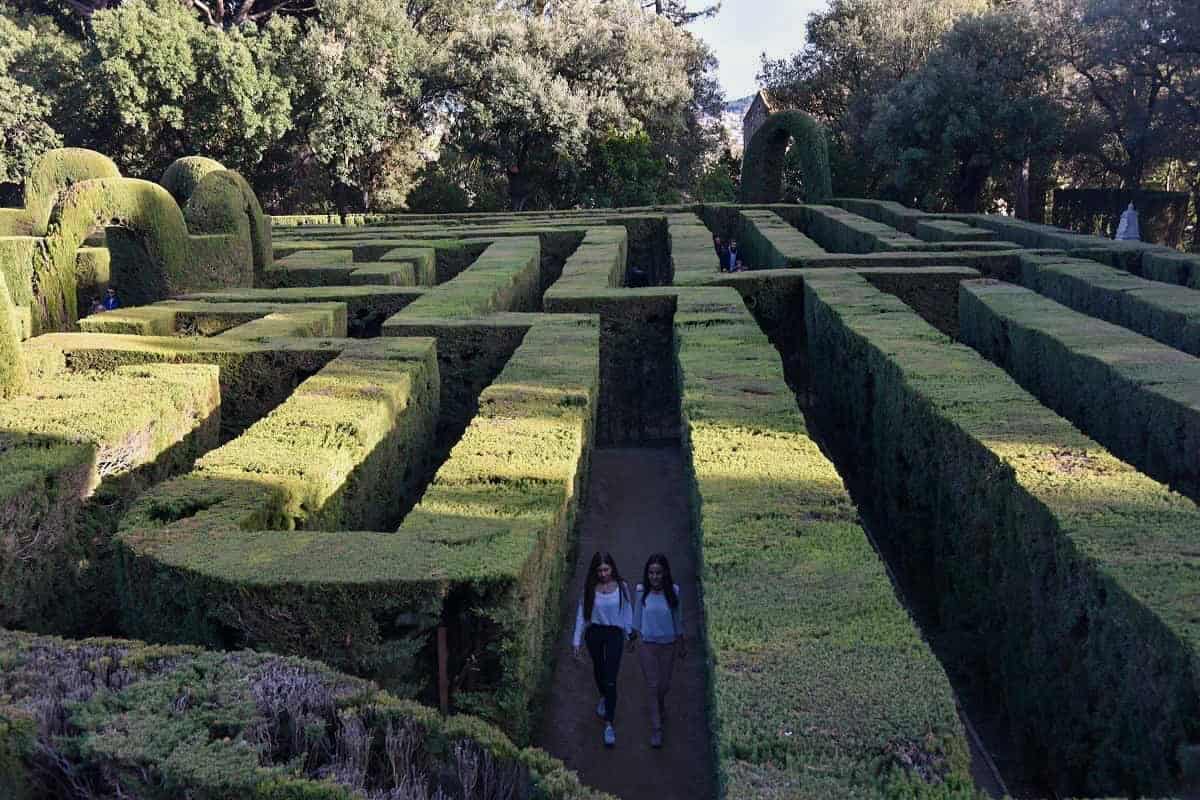This post may contain affiliate links.
Set on the slopes of the Collserola ridge in the Horta-Guinardó district, Parc del Laberint d’Horta is Barcelona’s oldest conserved garden and one of its best-kept secrets. Covering over 9 hectares, this verdant haven blends neoclassical precision with romantic charm.
History of the Gardens
The garden’s story began in 1791, when Joan Antoni Desvalls i d’Ardena, Marquis of Llupià, Poal and Alfarràs, commissioned a neoclassical garden for his estate. Designed by Italian architect Domenico Bagutti and constructed with the help of master builders Jaume and Andreu Valls and French gardener Joseph Delvalet, the garden reflected the elegance and symmetry of 18th-century landscape design.
In the mid-19th century, the Desvalls family expanded the park with romantic touches under architect Elies Rogent, adding flower beds, waterfalls, gazebos, canals, and a symbolic cemetery that contrasted with the original formal layout. The estate was transferred to the Barcelona City Council in 1967 and opened as a public park in 1971 after restoration. A second restoration in 1994, supported by the European Union, turned it into a garden-museum with a visitor cap of 750 to protect its fragile environment.
Layout and Highlights
The neoclassical garden is arranged across three terraces, each rich in classical symbolism and architectural detail. The lower terrace features a cypress hedge maze with a marble relief of Theseus and Ariadne at its entrance and a statue of Eros at its center. Above, the intermediate terrace includes two Tuscan-columned pavilions dedicated to Danae and Ariadne, and a staircase adorned with a bust of Dionysus, once used for classical performances. The upper terrace hosts a pavilion honoring the Nine Muses and a spring-fed basin dedicated to the nymph Egeria. Throughout the garden, statues, bas-reliefs, and fountains portray Greco-Roman myths, emphasizing beauty, love, and contemplation.
In contrast, the romantic garden, added in the 19th century, offers a more natural and reflective experience. Shaded paths lead through flower beds, forested corners, and a small waterfall, blending into the surrounding Mediterranean woodland. This section once included a symbolic cemetery designed to inspire quiet meditation on life and death.
Architectural Features
Near the entrance stands Desvalls Palace, an eye-catching building with neo-Gothic and neo-Arabic details that now houses the Centre de Formació del Laberint, a horticulture school and botanical library. Adding further historical depth to the grounds is the Torre Soberana, a 14th-century country house restored with Arabesque decor in the 19th century. Over the years, the park has also hosted open-air classical theater and received royal visitors like Charles IV and Alfonso XIII.
Popular Culture
Parc del Laberint d’Horta’s enchanting atmosphere has made it a favorite among filmmakers. It is often associated with Guillermo del Toro’s Pan’s Labyrinth (2006), where the maze provides an ideal backdrop for the film’s magical tone, The same year, the park was also featured in the thriller Perfume: The Story of a Murderer.
Practical Details
The park is open daily from 10:00 AM to 6:00 PM in winter and until 8:00 PM in summer, though it closes on the afternoon of December 25. Entry is free on Wednesdays and Sundays, with discounts available for residents, seniors, the unemployed, and children under five. The nearest metro stop is Mundet (L3).




